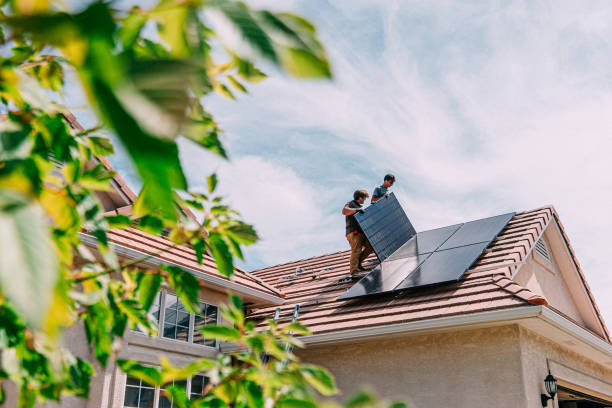A Comprehensive Guide to Installing Solar Panels: Key Steps and Benefits
Transitioning to solar energy represents a significant step toward sustainable living and energy independence. Installing solar panels involves careful planning, understanding system requirements, and recognizing the long-term advantages. This guide explores the essential aspects of solar panel installation, from initial assessment to final setup, helping homeowners make informed decisions about embracing renewable energy.

Solar panel installation has become increasingly popular as more homeowners seek renewable energy solutions for their properties. The process involves several critical steps and considerations to ensure optimal performance and return on investment. Understanding these elements can help you navigate the transition to solar power effectively and maximize the benefits of this sustainable energy source.
Understanding the Cost of Installing Solar Panels
The financial investment in solar panels varies significantly based on several factors. System size represents the primary cost determinant, with residential installations typically ranging from 5kW to 10kW systems. The average cost for residential solar panel installation falls between $15,000 and $25,000 before incentives. However, federal tax credits can reduce this amount by 30%, while state and local incentives may provide additional savings.
Quality and type of panels also influence pricing. Monocrystalline panels, known for their efficiency and sleek appearance, generally cost more than polycrystalline or thin-film alternatives. Installation complexity further affects costs, with factors such as roof condition, angle, and accessibility playing significant roles.
Labor costs typically represent 10-20% of the total installation price, varying by location and installer expertise. Additional components like inverters, mounting hardware, and monitoring systems contribute to the overall investment.
| System Size | Average Cost Before Incentives | Estimated Cost After Federal Tax Credit |
|---|---|---|
| 5kW | $15,000-$18,000 | $10,500-$12,600 |
| 7kW | $19,000-$22,000 | $13,300-$15,400 |
| 10kW | $24,000-$28,000 | $16,800-$19,600 |
Prices, rates, or cost estimates mentioned in this article are based on the latest available information but may change over time. Independent research is advised before making financial decisions.
Choosing the Right Solar Panel for Your Home
Selecting appropriate solar panels requires evaluating several key factors. Efficiency ratings indicate how effectively panels convert sunlight to electricity, with premium panels achieving 20-22% efficiency while standard options range from 15-18%. Higher efficiency panels produce more power in limited spaces but come at a premium price.
Panel types offer different advantages: monocrystalline panels provide higher efficiency and aesthetic appeal; polycrystalline panels balance cost and performance; and thin-film panels offer flexibility for unique installations despite lower efficiency.
Durability matters significantly, with quality panels featuring robust warranties—typically 25-30 years for performance and 10-12 years for equipment. Temperature coefficient represents another important consideration, as it measures how heat affects panel performance. Lower coefficients (-0.3% to -0.5% per degree Celsius above 25°C) indicate better hot-weather performance.
Manufacturer reputation should influence your decision, with established companies offering more reliable products and warranty support. Finally, consider your specific energy needs, available roof space, and budget constraints when making the final selection.
Key Benefits of Solar Panel Installation
Solar energy systems deliver numerous advantages beyond environmental benefits. Financial savings represent a primary motivation for many homeowners, with electricity bill reductions of 70-100% possible depending on system size and local conditions. Most residential systems achieve complete return on investment within 7-10 years, while continuing to generate free electricity for decades thereafter.
Property value enhancement represents another significant benefit, with studies indicating homes with solar installations sell 20% faster and at premiums of 4-6% compared to non-solar properties. Energy independence provides protection against utility rate increases, which historically rise 2-3% annually in most regions.
Environmental impact remains compelling, with the average residential solar system offsetting approximately 3-4 tons of carbon emissions annually—equivalent to planting over 100 trees each year. Many jurisdictions offer additional incentives beyond the federal tax credit, including property tax exemptions, rebate programs, and performance-based incentives that further enhance financial returns.
Reliability represents an often-overlooked advantage, as modern solar systems typically require minimal maintenance while providing consistent power generation for 25-30 years. During grid outages, systems equipped with battery storage can maintain essential household functions, providing valuable energy security.
The Solar Panel Installation Process
The installation journey begins with a comprehensive site assessment, where professionals evaluate your property’s solar potential by examining roof orientation, angle, shading patterns, and structural integrity. This assessment determines optimal panel placement and system sizing based on your energy consumption patterns.
Permitting follows, involving documentation submission to local authorities for approval. This phase typically requires electrical diagrams, structural analyses, and compliance verification with local building codes. Though sometimes time-consuming, most installers manage this process for their customers.
The physical installation usually requires only 1-3 days for residential systems. Crews begin by preparing mounting hardware, followed by panel placement, wiring connections, and inverter installation. After installation, the system undergoes thorough testing and inspection before utility connection.
The final step involves connecting to the grid through your utility company, which typically installs a bidirectional meter to track energy production and consumption. This enables net metering, where excess production earns credits against future electricity use. Most installations become fully operational within 2-8 weeks from contract signing, depending on local permitting timelines.
Maintaining Your Solar Panel System
Solar systems require minimal maintenance compared to other home systems. Regular cleaning represents the most frequent requirement, with panels needing attention 2-4 times annually depending on local conditions. In dusty or pollen-heavy environments, more frequent cleaning may improve performance.
System monitoring provides critical insights into performance. Modern installations include monitoring software that tracks production, identifies potential issues, and calculates savings. Regular performance reviews help ensure optimal operation and early problem detection.
Professional inspections every 3-5 years help maintain system integrity, with technicians checking electrical connections, mounting hardware, and inverter performance. Most components carry extensive warranties, with inverters typically covered for 10-15 years and panels for 25-30 years.
In regions with heavy snowfall, occasional snow removal may be necessary, though many systems self-clear as panels warm. Simple maintenance practices can extend system life and maximize energy production throughout the decades-long operational lifespan.
Solar panel installation represents a significant but rewarding investment in your property’s future. By understanding the costs involved, selecting appropriate equipment, recognizing the substantial benefits, following proper installation procedures, and implementing basic maintenance practices, homeowners can successfully transition to clean, renewable energy while achieving meaningful financial returns and environmental impact.




